Thinking is not driven by answers but by questions. Had no questions been asked by those who laid the foundation for a field…the field would never have developed in the first place.
Paul and Elder (2000)
Is there a more important topic in teaching than what and how to question?
[Imagine a long, thoughtful pause.]
Provoking interest, checking for understanding, enabling deeper connections, reinforcing schema, exploring, affirming…
(Who designs or generates and asks the questions is another post).
Adding to the what and how to question design, managing responses seems to be “en vogue” pedagogy topic. Old-skool, tech-skool-cool, cold call, choral, no-hands up, the role of feedback (immediate, delayed, self or peer), and my current professional area of interest – concurrent metacognition, all play a part or present an opportunity for teachers to explore.
B to A questions
More recently, I have been looking beyond Q to A, looking at A to Q questions. Back to front questions. Think 3×2 and 2×3.
“If this is the Answer… What is the Question?” technique, what I refer to as “pepper and salt” (as opposed to slat and peeper – which is more familiar and sound right) questions. What Dan Willingham calls B to A questions, a technique that has more than a few run-outs in the our classroom. So much so, it is an option in classroom.rememberrmore.app and the remembermore.app.
Q-A: What happened in 1066?
A-Q When was the battle of Hastings?
More recently, Ollie Lovell and Harry Fletcher-Wood discuss here. Around the forty min mark.
And one final point that I am not going to tackle here now, is the relative value of pre-planned versus in-the-moment questions. It is important distinct and comes into play section. Teaching with RememberMore means that I have categorised and tagged questions on hand, ahead of the lesson. It means that I have to plan ahead and define the substantive knowledge, before designing the questions. In lessons, using resource, knowing I have that resource to call upon, is assuring and allowing me more “thinking space” or cognitive load for teaching.
Now your turn
Friday’s Year 7 travel writing lesson was a “pepper and salt” success. After a term and a half, and homework focused on the content, we already have a fast and flexible interleaved, retrieval routine, that includes a self assessment protocol.
With just one click and we also have B to A or “pepper and salt” questions.
We “quiz” most lessons and quiz-test every Thursday in our exercise books – 10 Questions from a slowly extended deck or bank of Cards. We sometime quiz in the middle and the end of the lesson too. Always self assessed using the 2-1-0 mark scheme – with corrections made and no spaces unfilled. Highlighting key learning opportunities, or misconceptions for example.
- 2 marks – on the money, matches the answer on the screen
- 1 marks – more right than wrong (a key metacognitive decision ) add / improve
- 0 marks – incorrect or no answer – correct, add, highlight
Given that this was “knowledge already relatively secure, the pupils loved the new challenge. A challenge that anchored and consolidated their knowledge. A challenge that also offered overlearning.
Help yourself – Travel writing deck – 83 Cards.
PS – It is Sunday morning and I am returning to the post to share that since the lesson 4 pupils have revisited the Cards.
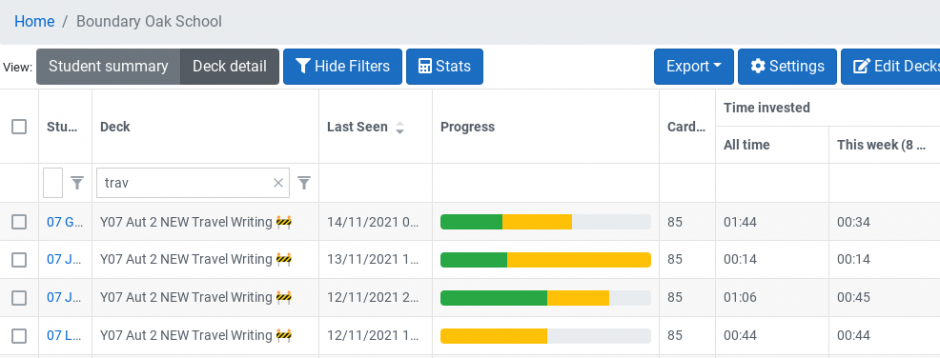

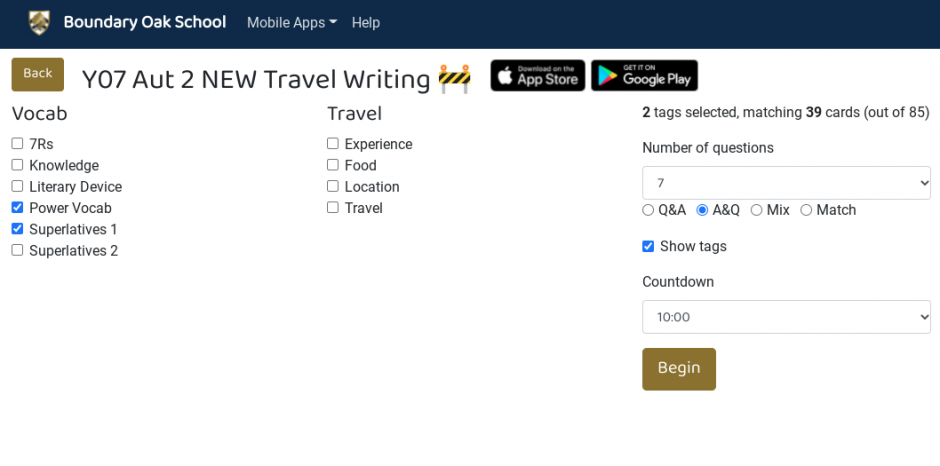
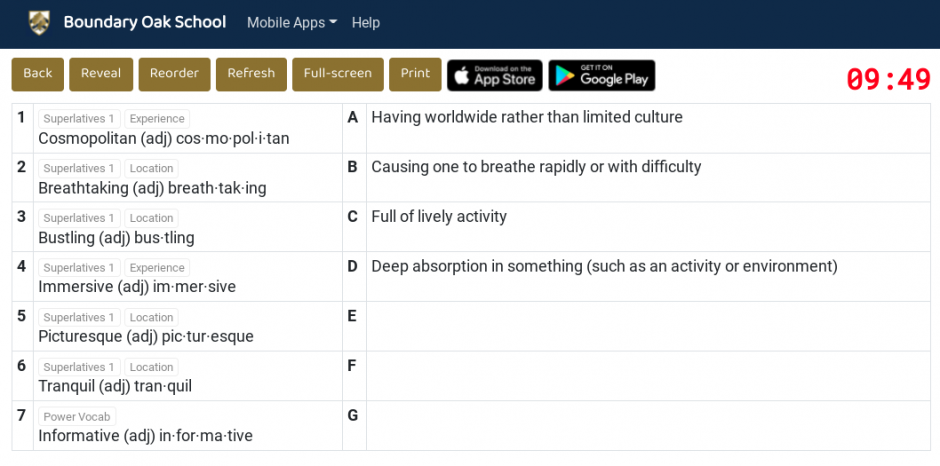
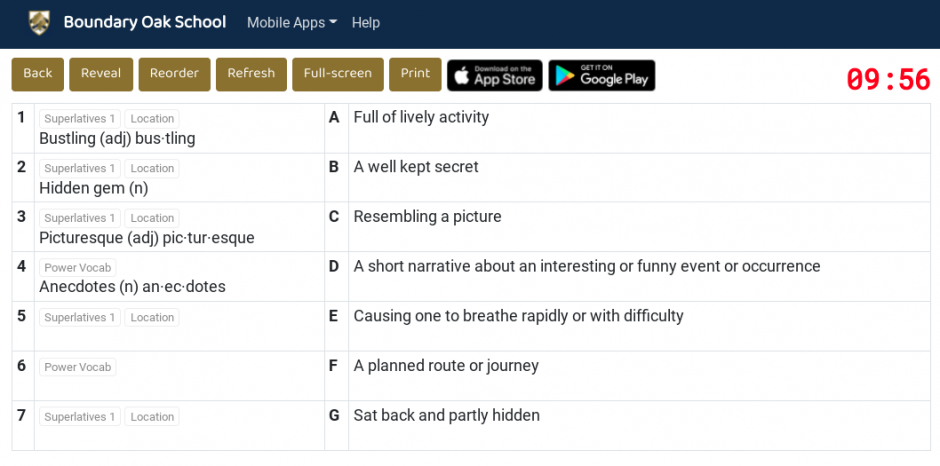

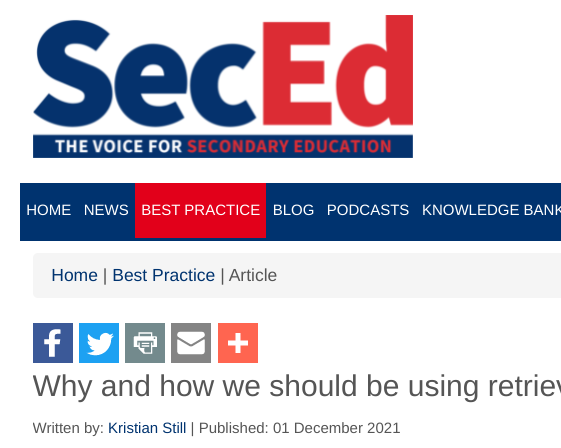
Pingback: What and why we are retrieving – changes the mode – Edventures